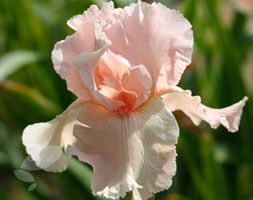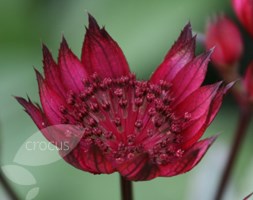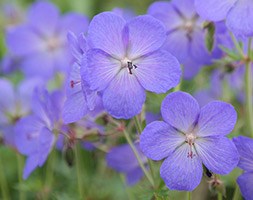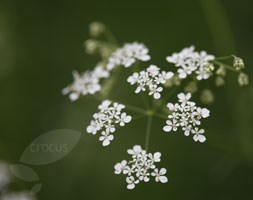New products at Crocus
by Sarah - February 28th, 2016.Filed under: Crocus, New Products.
New lines at Crocus
Dracaena marginata (dragon plant) £29.99
Position: prefers light shade, but close to a window Soil: fertile: good potting compost Rate of growth: average to fast Hardiness: tender (indoors only) Current height: approximately 120cm (including pot) Pot covers: choose a 22cm pot cover to give a good fit over the pot. Home care: Water well in the growing season, but less so in winter. Misting the leaves with water will help keep the humidity levels high, as well as keeping the leaves dust-free. Repot in spring every couple of years and keep temperatures above 10C in winter.
Iris ‘Magical Encounter’ (bearded iris) £9.99
Position: full sun Soil: well-drained, moderately fertile, neutral to acidic soil Rate of growth: average Flowering period: May and June Flower colour: pale pink with an apricot flush Other features: all parts of the plant may cause severe discomfort if ingested Hardiness: fully hardy Apricot-pink flowers with salmon-pink beards appear on the tall branching stems from late spring. A soft and unusual tone, the flowers will mix easily with a range of colours including browns, maroons, and nearly all the pastel shades. When not in flower the fans of sword-shaped foliage will offer vertical movement and structure to the border right up until mid- to late-autumn. Like all irises, it is worth preparing the soil before planting by adding plenty of well rotted manure or good garden compost to provide nitrogen and other nutrients. Garden Care: Plant shallowly with the upper part of the rhizome sitting on the surface of the soil, incorporating a low nitrogen fertiliser in the planting hole. After planting remove the upper-most third of the leaves to protect against wind-rock. In exposed areas stake with bamboo canes in early spring. Remove the stems after flowering from the base as this will concentrate the plant’s energy into producing new rhizomes. Divide and replant about every three years.
Astrantia major ‘Claret’ (masterwort) £9.99
Position: full sun or partial shade Soil: fertile, moist, preferably humus-rich soil Rate of Growth: average to fast Flowering period:June to August Hardiness: fully hardy This is one of the darkest-flowered astrantias, with deep, ruby red pincushion-like flowers with a ruff of longer bracts than many other varieties. The leaves are pretty too; deeply lobed and dark green. Although it is an old cottage-garden favourite, this astrantia works equally well in contemporary-style plantings. Use towards the front of a sunny, yet moist border, where the flower colour can be fully appreciated. Astrantias have been cultivated in Britain since the 16th century and have numerous common names, such as melancholy gentleman, Hattie’s pincushion and the more well-known masterwort. Garden care: Astrantias do not like to dry out. Incorporate plenty of organic matter when planting and water well in dry weather especially newly established plants. Lift and divide large clumps in early spring and apply a generous 5-7cm mulch of well-rotted manure or garden compost around the plant. Divided specimens may take some time to establish since they don’t like having their roots disturbed.
Geranium ‘Johnson’s Blue’ (cranesbill) £7.99
Position: full sun or partial shade Soil: fertile, well-drained soil Rate of growth: fast-growing Flowering period: May – August Hardiness: fully hardy Deep lavender-blue, saucer-shaped flowers appear in early summer among deeply di vided, mid-green leaves. The loose clusters of lavender-blue flowers, become paler at the centre, look lovely weaving in and out of the front of a mixed border or at the base of flowering shrubs. This geranium rapidly forms a dense carpet of foliage, va luable for suppressing weeds, and if cut back after flowering, will usually prod uce a second flush of flowers later in the summer. Garden care: In midsummer rejuvenate plants that are beginning to look jaded, by removing old flowered stems and leaves. Lift and divide large colonies in spring.
Anthriscus sylvestris (cow parsley) £6.99
Position: full sun or partial shade Soil: well-drained soil Rate of growth: fast Flowering period: May to July Hardiness: fully hardy Billowing umbels of tiny, white flowers top finely divided foliage from mid spring to early summer, creating a charming, ethereal quality. A short-lived perennial or biennial that is ideal for naturalised planting schemes or meadows, where it can be allowed to set seed freely. Garden care: Support with brushwood or link stakes in spring before the flowers appear. In autumn cut it back to just above ground level and apply a generous layer of mulch around the roots.











